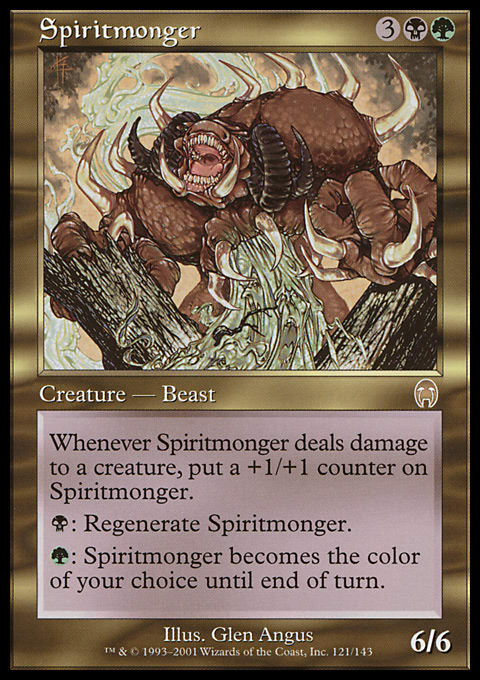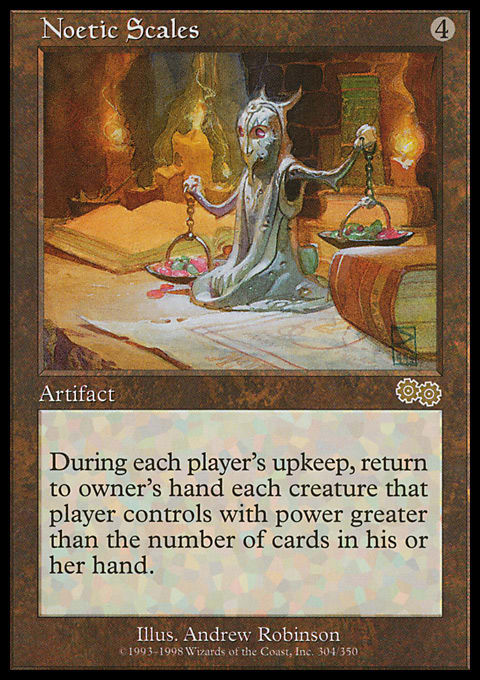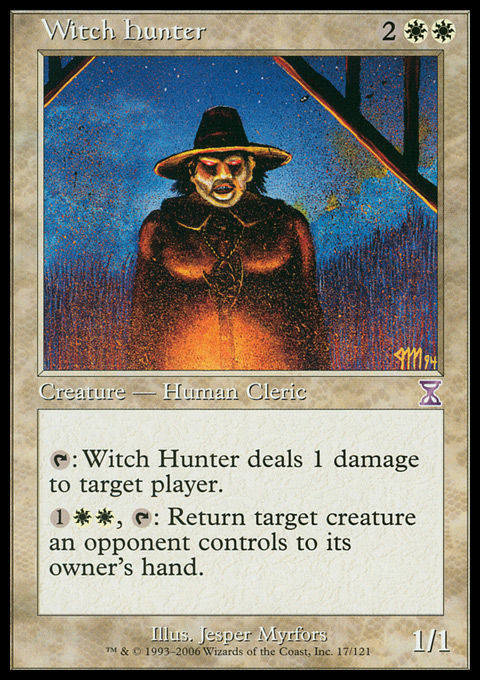I was considering a few cards for a possible deck and happened upon a card that I hadn’t seen in a long time. I was amazed that no one was running it since it seemed to fit in several decks. This was just one in a long line of cards that have been forgotten, not because they were weak, but simply because time has passed. I thought I would use this week’s article to look at a few of these cards. Perhaps you’ll see something you didn’t even know existed that fits perfectly in one of your decks!
Carrion – I used to run Carrion as a backup plan to whatever huge/huge creature I had put into play. If the creature was about to die, I would sacrifice it to Carrion in response and end up with a handful of 0/1 Insect tokens. An old deck used to run Coat of Arms just to take advantage of this, but with so many ways to quickly make many token creatures now, that is not the best option. There are plenty of cards that can take advantage of the fact that you now have multiple creatures on your side of the board.
This card came to mind when Tommy Sullivan suggested Thromok the Insatiable for the Dragon Broodmother deck. Play Thromok devouring 3 creatures to make a 9/9 creature. When Thromok is targeted for death, play Carrion, creating nine 0/1 Insects. Play a second Thromok or recur the first one, devouring the 0/1 Insects to make an 81/81 Thromok.
Nature's Blessing – This is not here because I think you should be giving your creatures banding! This card can make a creature bigger and/or gain first strike or trample. Permanently. When most people read this card, they just add, “until the end of the turn,” at the end of it, since that is what everyone expects. If a card is giving a creature trample or first strike permanently, it is usually an Aura or Equipment. Wizards doesn’t like to force players to remember that a creature has an ability that isn’t right there on the board and obvious to everyone. This card does that. And it does this for you at instant speed!
If you play this card, I recommend using a couple of different-colored tokens so it is clear which creature has which ability. If your group is a little more cutthroat, you are welcome to skip this and let your opponents mess up their combat math.
As someone who has played Nature's Blessing, the best way to use it is to attack with it in play, ensuring you have a card in hand and at least a Plains and a Forest untapped. Don’t try to hide Nature's Blessing either. You want your opponent to be assuming that you are going to use Nature's Blessing in a way that is most detrimental to him. So many times, opponents will take the hit, fearing what you are going to do with Nature's Blessing, and you don’t actually have to do anything.
The threat of using the card is generally strong enough to overcome the downside of the card: tossing a card in your graveyard to get, what most players would agree, benefits that aren’t worth the loss of a card. As the game goes on, the loss of a card can be mitigated—it is just an extra land you didn’t need, you are throwing a flashback card, or you have some way to recur cards in your graveyard. Perhaps you are rolling old-school and need threshold. The ability to give a creature trample or first strike or make the creature a little bigger, all at instant speed, can often be worth the card at a crucial moment in the game.
And remember, we are playing multiplayer games here; feel free to give your opponent’s creatures these benefits when appropriate. Throwing a +1/+1 counter on an opponent’s Geralf’s Messenger as it is about to die is very satisfying!
Spiritmonger – If your group has players who were playing a lot during the Invasion block, this guy is certainly something you’ve seen, but I suspect many of my readers have never seen this card.
Spiritmonger’s awesomeness has dimmed over time; a 6/6 for 5 isn’t nearly as awe-inspiring as it used to be, but don’t worry, this guy still rocks. The +1/+1 ability is still a monster in games. Players do not want to block the Spiritmonger unless they can kill it—they are only making it more difficult to kill later on.
Many players have suggested that the lack of trample on this creature is an issue, but I disagree. In a weird way, you want people to block this guy so he can grow bigger. At least you want that initially. You’ll want to have some kind of evasion to give him later on when all anyone can do is chump-block.
The primary benefit of the color-changing ability is dodging protection abilities. All those white creatures that have protection from black do nothing against this fellow. The ability seems to be a minor benefit, but on a creature already as good as Spiritmonger, another ability is just an embarrassment of riches.
Phyrexian Splicer – I have a disturbing love of this card. The key to taking full advantage of the Splicer is to have creatures with each of these abilities, particularly shadow. While tapping the Splicer to give your biggest, nastiest creature shadow is great, there is a better way. How many games have you played in which Opponent A, a.k.a. Andrea, attacked with everything she had, except that one Voracious Cobra, knowing everyone will stay away from the first strike, deathtouch creature?1 On Opponent B’s turn, a.k.a. Your Big Chance to Shine, you give that Cobra shadow for the turn. Andrea’s one defender is out of the picture for the turn, and Opponent B can now swing in without any risk to his creatures.
While trading shadow is the real all-star for the Splicer, shifting trample, first strike, and flying can be insane as well.
A word of warning when using the Splicer: There are times when you will want to use it after attackers are declared but before blockers (giving flying, for example). Other times, you’ll want to wait for blockers to be declared (giving first strike or trample). Do not constantly stop your opponents when they attack each other so you can work out how best to use the Splicer. This will grow old and only acts as a reminder to everyone that you can mess with their combats. Eventually, your opponents will just destroy the Splicer or destroy you. Be ready on your opponents’ attack phases, and think fast. When you want to use it, jump in at the right moment and use it, and then shut up. It is a valuable tool and should be used wisely.
Meddle – By now, you are probably thinking that I enjoy cards that mess with other people’s combat. Well, it turns out I just like messing with other people’s plans. I’m not so much a control player as a supporter of chaos. Meddle is another great card to encourage chaos. I normally try not to use this to redirect damage unless the damage is particularly huge. I prefer to use this when someone is trying to steal a creature. My metagame is filled with plenty of cards that steal creatures. I’m generally happy to give a player a 1/1 Spirit token or my other opponent’s Voice of the Woods instead of my Frost Titan. Some players even like to take control of their own Fog Bank! Who knew?
Noetic Scales – When I initially saw this, I really didn’t see it being all that different than Meekstone. Both cards are designed to keep the big creatures from attacking while you work on your plans for domination. Noetic Scales offer so much more, though. While Meekstone will keep a creature tapped, it does mean that the creature will probably push at least one swing in. Noetic Scales makes sure that doesn’t happen. More importantly, the Scales forces players to constantly recast their bigger creatures, boosting your tempo advantage through the roof.
The constant bouncing also costs player the +1/+1 counters they had built up, and equipping a creature is close to pointless.
There is a risk that you are making it very easy for your opponents whose creatures have enters-the-battlefield abilities, but let’s face it: They were probably going to bounce their creatures anyway, so what have you really given them?
Aether Membrane – Most players are reluctant to attack anyone who has a deathtouch creature available to block. The almost irrational fear that he will use it to destroy one of your creatures is enough to encourage many players not to attack at all just because they fear losing their creatures. Aether Membrane brings that same fear.
The part that makes the Membrane better than most deathtouch creatures is its 5 toughness. At least the deathtouch creature is likely going to die when it does its work since most deathtouch creatures don’t have a way to survive against creatures with more than even 1 power. Aether Membrane is tough for most creatures to kill. Knowing that you are probably going to have to pay to recast your creature again and again keeps most players from attacking.
Aether Membrane also has more flexibility than the usual deathtouch creature. There are times when an opponent will want to bounce his creature. It usually involves some enters-the-battlefield trigger. Assuming you are in favor of that trigger going off, it is an easy way for the two of you to make that happen.
Witch Hunter – I know that 4 mana for a 1/1 is a terrible price. I know the card doesn’t have shroud or hexproof, so you are taking your chances. I think the upside is worth it. When Witch Hunter was made so many years ago (the illustration is copyrighted 1994!), creatures were not particularly powerful. In today’s game, creatures are at the top of the food chain. The ability to bounce an opponent’s creature is more valuable than ever, and to have that on a white creature earns you bonus style points.
I don’t think I really need to explain all the benefits to bouncing an opponent’s creature, particularly when many of the recent sets have pushed +1/+1 counters and token creatures. And again, this is multiplayer we are talking about. The ability to remove an attacking or potential blocking creature when two opponents are combating each other is great fun.
Delirium and Backlash – While the Mirage and Invasion cards are slightly different, in essence, they both tap a creature and make that creature deal damage equal to its power to its controller. For 3 mana, you can eliminate a threat for a round and do a surprising amount of damage to an opponent. These cards do great work against the Primordials and Titans that are running around your metagame.
I relied heavily on these cards when I was first starting the game. My collection was small, and I wasn’t buying individual cards. These were inexpensive ways2 to deal with some of the powerhouse cards that were in my metagame at the time. Admittedly, a Backlash only deals with a creature for one turn. If you time your Backlash just right, however, one turn would be all you’d need!
I want to thank my playgroup for brainstorming many of these cards with me. George, Jesse, John, and Tyler gave me enough cards for this and a future article! Thanks, guys!
Bruce Richard
1Yes, I know it isn’t technically deathtouch, but you see where I’m going with this.
2 They are still inexpensive, with Backlash at $0.49 and Delirium at $0.75 at CoolStuffInc.com.

























